SIEBE GORMAN 12 BOLT DIVE HELMET
RECREATION 1930’s Era
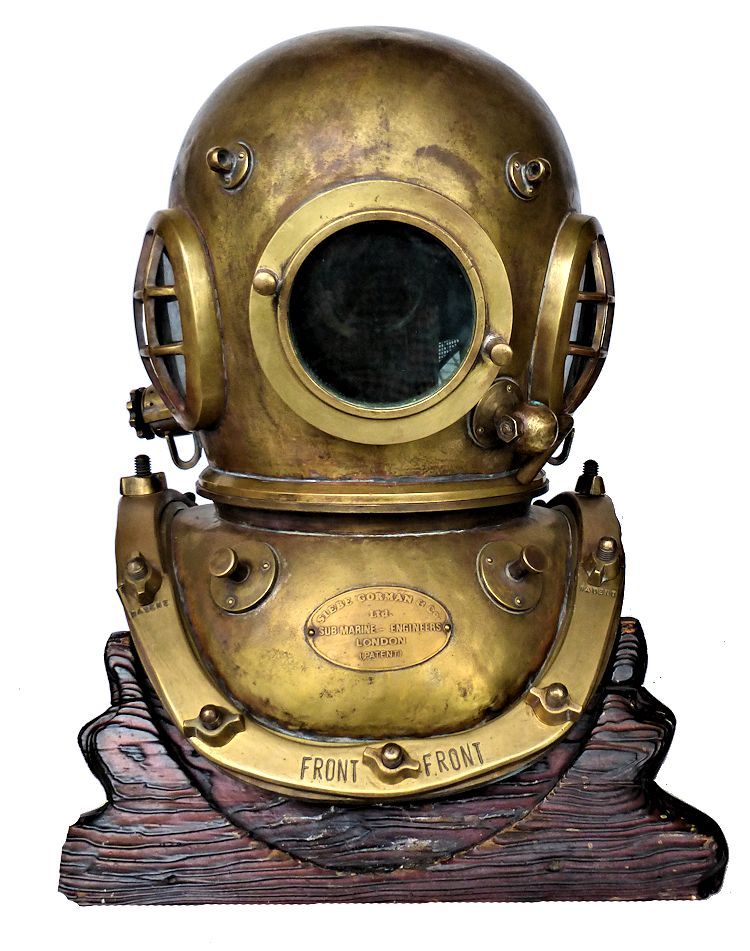
In 1840, August Siebe was the inventor of the deep sea diving helmet
as we know it today. His helmets are prized worldwide by collectors and divers, and this helmet recreation is a
near perfect example
SERIAL NUMBERS: Bonnet None Breast Plate None
TOTAL WEIGHT 35 lbs
(13 pounds less than an authentic 12 bolt Siebe Gorman helmet)
STAND NOT INCLUDED
Presented is a carefully made, upscale,
recreation of a Siebe Gorman three light, twelve bolt, commercial dive helmet. The helmet’s last owner
is a collector of vintage diving gear and paraphernalia who owned the helmet for over ten years, reporting
that it was made around 30 years earlier by a diving enthusiast who was an engineer – machinist, from whom it was
originally acquired. It was sold because of downsizing for an impending move. Contemporary Siebe Gorman 12 bolt helmets in good condition
sell for $5500 to $6500 with older versions selling for considerably more, so this helmet represents a unique opportunity
to buy something you can afford that can pass for the real thing. The
following pictures which show it alongside an authentic 12 bolt helmet emphasize how close
it is to the real design. This helmet seems to be made from all brass.
Its front port opens and all movable parts operate. The bonnet is mounted on the breast plate using interrupted threads and
turns freely. There is a drop-down lever on the back to lock the bonnet in position and keep the helmet from turning.
The brails and tag have the proper markings, and there are air vents inside. For a helmet of this type, it weighs a heavy
35 pounds. Even though it looks like it could be dived, it is being sold now for display only. This helmet is being
sold for DISPLAY ONLY. It should not be dived without certification from an authorized dive shop. The following
pictures compare the helmet being sold to an authentic 12 bolt helmet sold in mid 2014.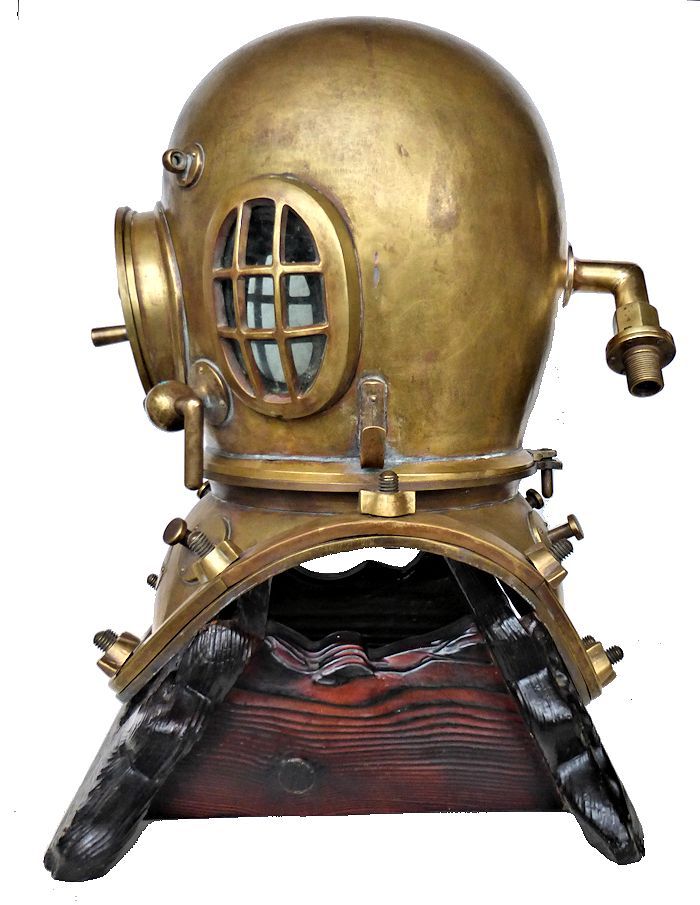
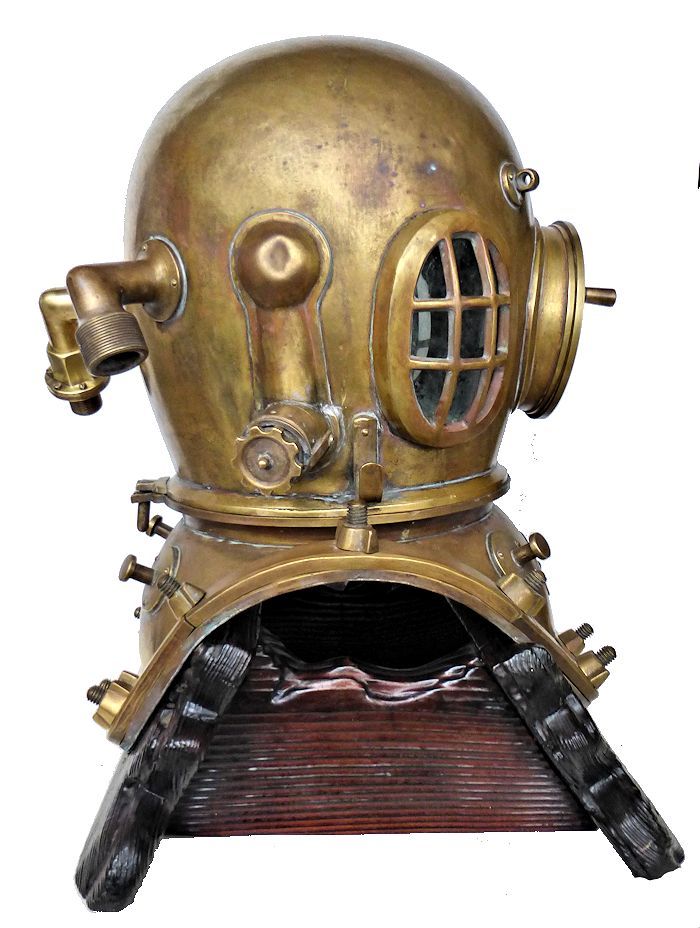
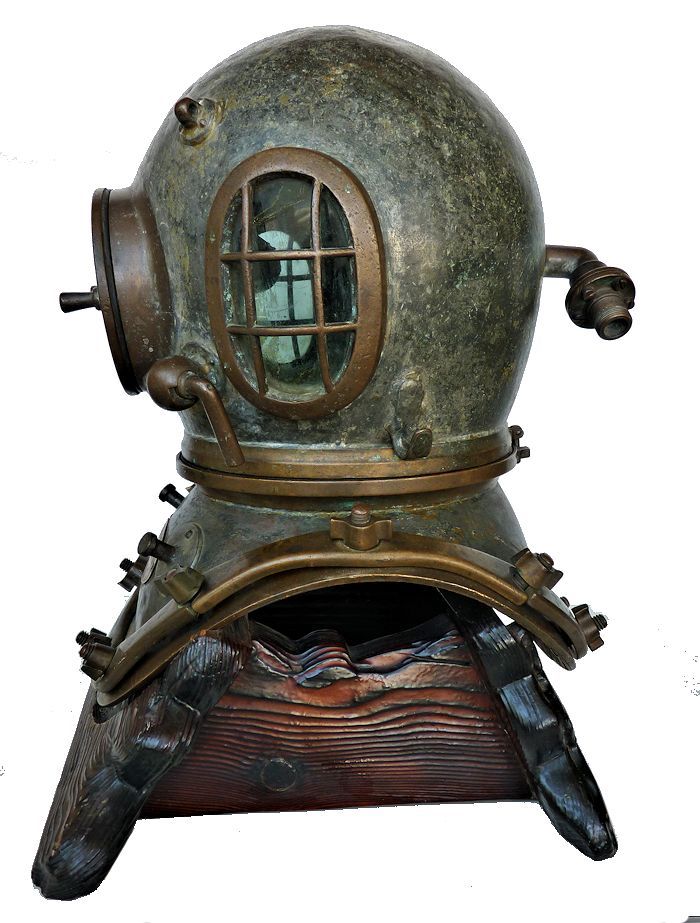
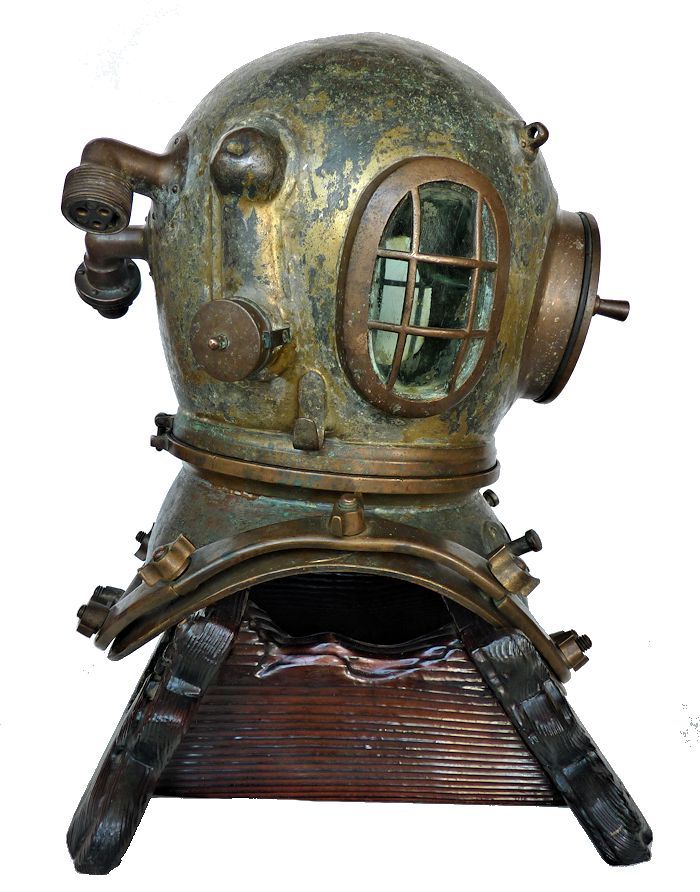
Comparing this helmet’s right and left sides to authentic Siebe Gorman 12 bolt dive helmet – bottom
SIEBE GORMAN’S
HISTORY IN BRIEF: Augustus Siebe the German-born founder of the firm which bears his name (1788-1872) is considered
“the father of diving”. Sib’s ‘closed’ diving helmet, first produced in 1840, allowed divers to
dive safely to greater depths than ever before. Attached to a rubber suit, it became the ‘Standard Dress’ that revolutionized
diving and made the underwater worker an essential part of both salvage operations and civil engineering. Many of the great
building projects of the Victorian era – bridges, tunnels and lighthouses still in use today – could not have been built without
divers.Sib’s design
was so successful that it remained in use essentially unchanged, by the Royal Navy until 1989. Born in Saxony in 1788 and
trained as a metalworker in Berlin, Siebe served in the Prussian army against Napoleon before emigrating to London in 1816.
He moved into 5, Denmark Street, a four-story house dating from the 1680s, in 1830. Located in St Giles-in-the-Fields, an
area which has had a long-standing connection with the metal-working trades, the property served both as his home and his
commercial premises. Continued.
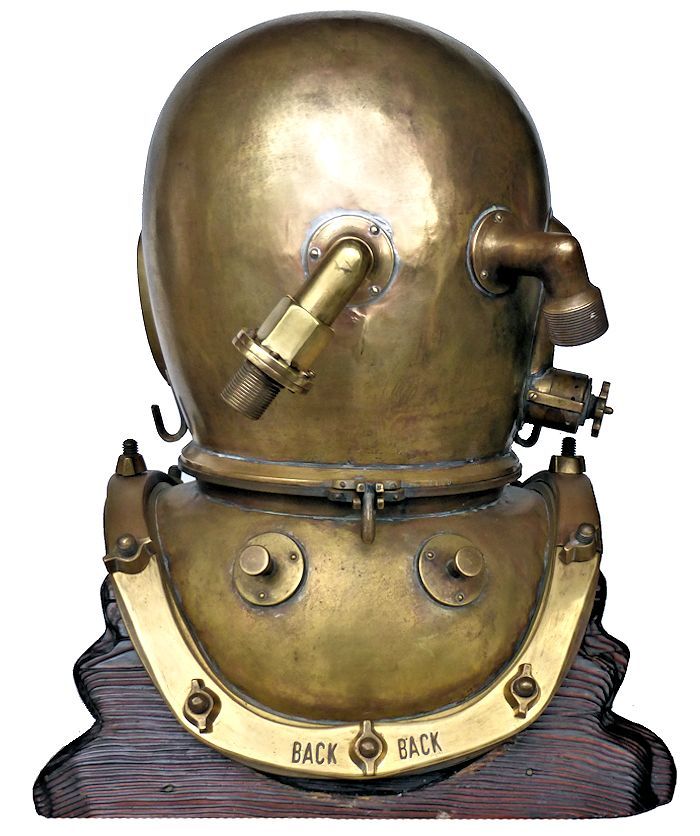
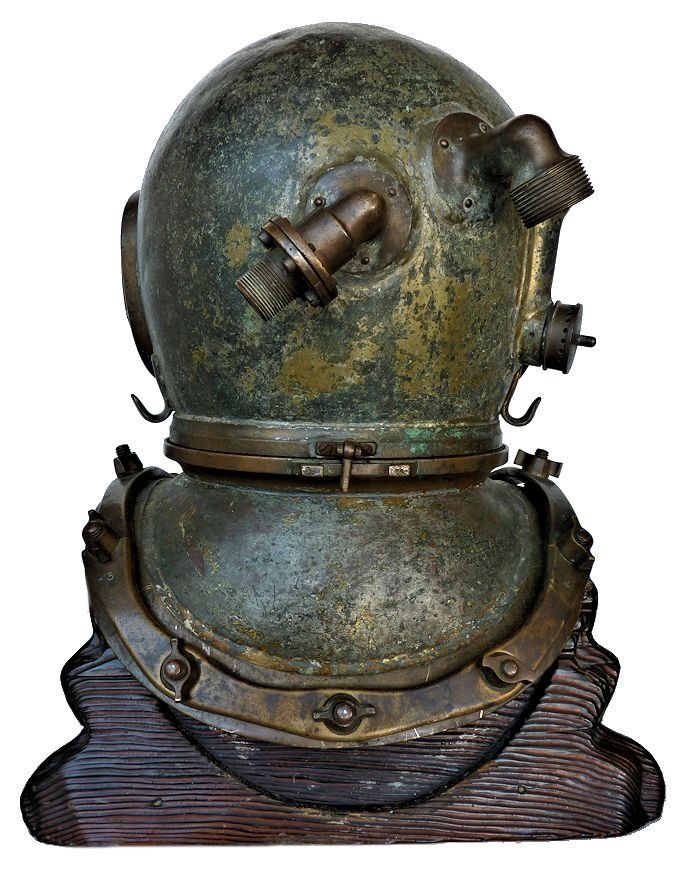 Top. This helmet’s back compared
Top. This helmet’s back compared
to authentic helmet – bottom
Siebe manufactured
his first ‘closed’ diving helmet in 1840. Previously, divers had relied on ‘open’ helmets from which spent
air had to escape beneath the rim of the helmet or below the hem of the diver’s rubber jacket, increasing the risk of
drowning. Siebe’s ‘closed’ helmet was bolted onto a modified diving suit based on the open helmet dress, with
divers receiving air from a pump on the surface. The suit was watertight and thus safer than earlier types of diving dress.
Together with special pumps designed by Siebe, it made diving to a depth of about 25 metres possible. Siebe perfected
the design of his new diving suit during the salvage operations carried out between 1840 and 1843 on the warship HMS Royal
George, sunk in 1782. Following this practical experience of salvage work, his company became the known source for the
safest and best of diving systems. Siebe’s other
inventions include a dial weighing machine, a paper-making machine, and a rotary water pump. In 1850, he manufactured one
of the first ever ice-making machines. Siebe won numerous medals at the 1851 Great Exhibition and the 1855 Paris Exhibition,
and was elected an Associate of the Institution of Civil Engineers in 1856. Siebe died at 85, in
1872. His obituary described him as “retiring, kind of heart and honourable in all his dealings.” The firm went
out-of-business in 1999.
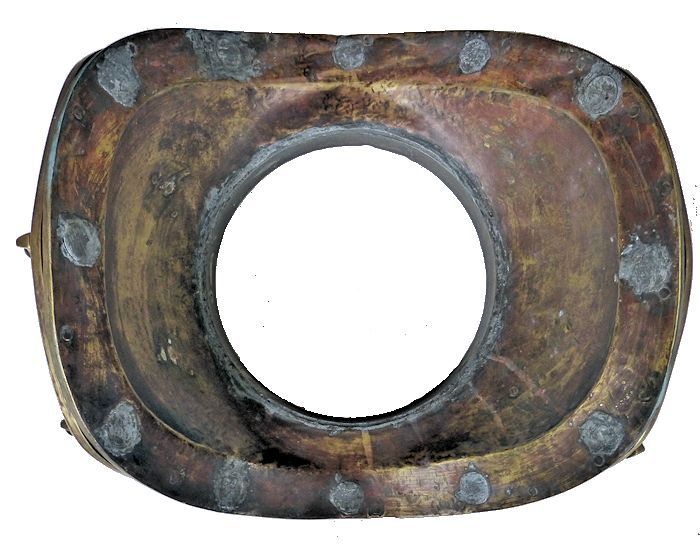
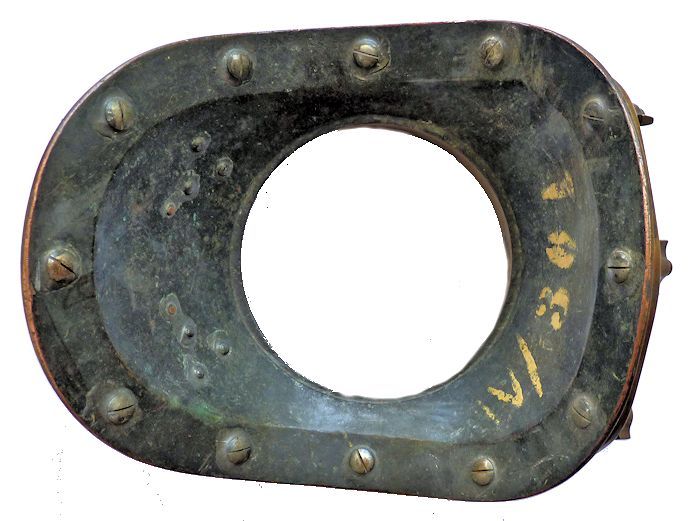
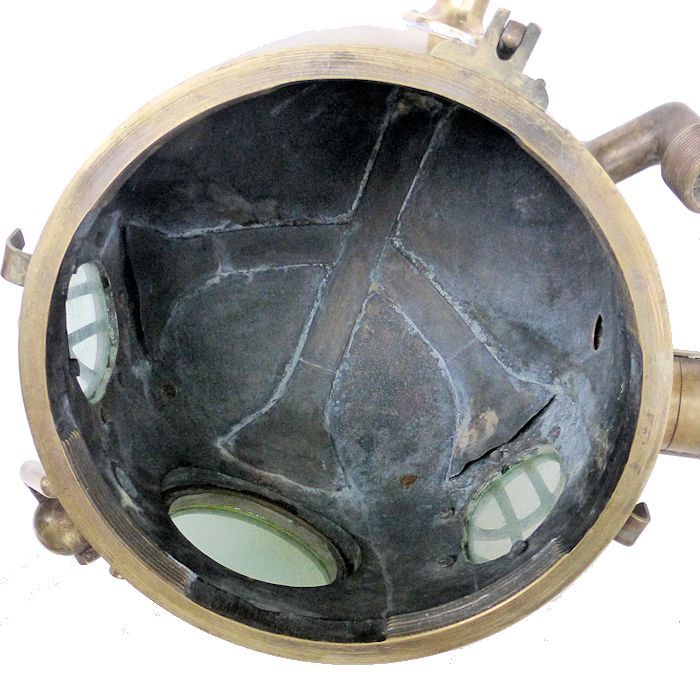
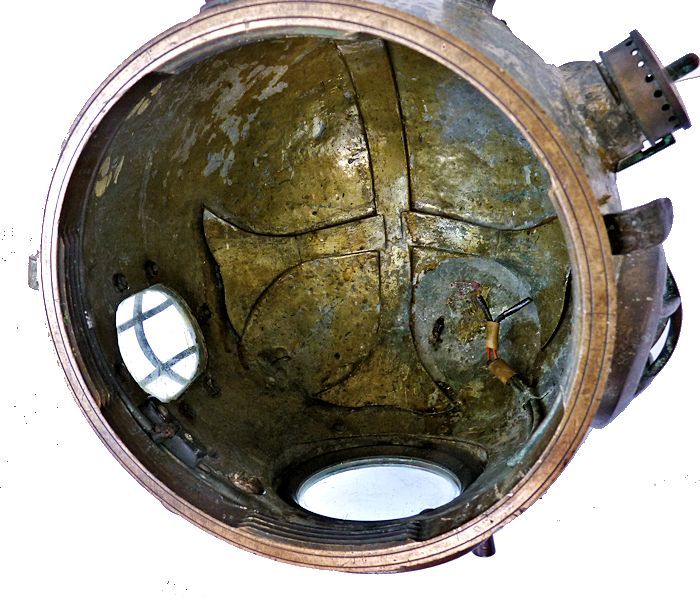
Bottom of corselet shown over the inside of the bonnet.
The authentic part is on the bottom
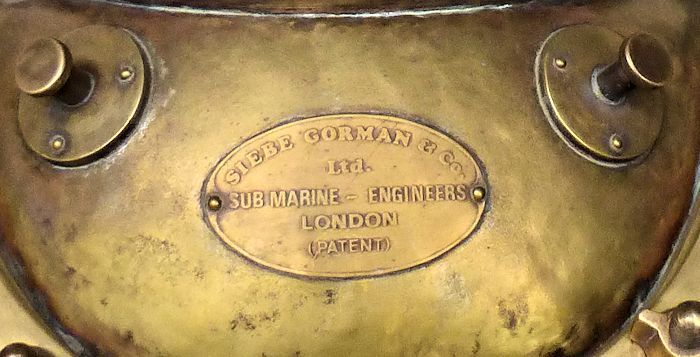
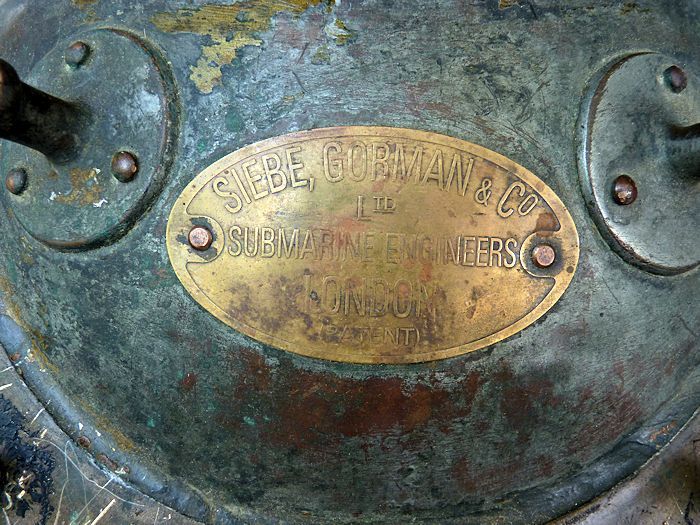
Authentic Siebe Gorman maker’s tag is
pictured on the bottom
